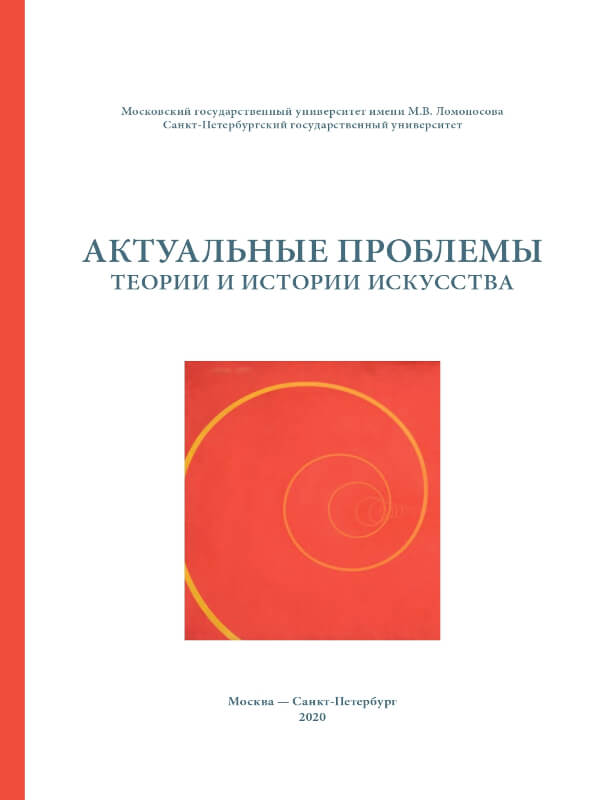The Memory of the World War II in the Contemporary Art of Austria: The Political Voice of Art
DOI:
https://doi.org/10.18688/aa200-4-56Keywords:
cultural turn, interpretative turn, cultural memory, contemporary Austrian art and literature, Slovak and Austrian historyAbstract
The article is devoted to the understanding of art as the medium through which society, depending on the current situation, redefines its history. In our opinion it is precisely at this point that the contribution of cultural theory to social practice lies. The social discourse of the Holocaust and the Second World War, which was reinforced in Western Europe at the end of the 20th century, will also give rise to art. A great part of this process isdue to the current Austrian literature. The voice of the art in Austria grows in power always when conservative, right-wing forces are on the rise. The art installation of Wolfgang Keller “who threw the first stone” near the wall of St. Stephen’s Cathedral in Vienna (2000) became the trigger mechanism of the famous Viennese protest of cultural figures against the coming to power of Jörg Haiders right-wing party. Earlier, in the year 1988, writer Thomas Bernhard responded with the play Heldenplatz to the affair of Austrian President Kurt Waldheim. Elfriede Jelinek, the Nobel Prize winner for literature, often criticized the Austrian right-wing party FPÖ in her work. The Holocaust debate has an extraordinary influence on the Austrian cinema as well as on the cinematography of the countries involved in the orbit of Austrian art. One of the most recent examples is Tlmočník (2018), the movie about Austria and Slovakia during the Second World War by Slovak director Martin Šulík.
References
Bachtin M. Estetika slovesnej tvorby. Bratislava, Tatran Publ., 1988. 451 p. (in Slovak).
Benczeová B. Postmoderná filozofia kultúry. Bratislava, Univerzita Komenského Publ., 2014. 83 p. (in Slovak).
Cheie L.; Pascu-Ringler E. Österreichische Literatur. Wien, Praesen Verlag Publ., 2018. 252 p. (in German).
Dörner A.; Vogt L. Literatursoziologie. Fernsehwissenschaft. Theorie — Geschichte — Analyse. Wiesbaden, Springer VS Publ., 2013. 337 p. (in German).
Geiger A. Es geht uns gut. München, Carl Hanser Verlag Publ., 2005. 389 p. (in German).
Gehler M. Die Affäre Waldheim: Eine Fall Studie zum Umgang mit den NS Vergangenheit in den späten achtziger Jahren. Österreich im 20. Jahrhundert: ein Studienbuch in zwei Bänden: Vom Zweiten Weltkrieg bis zur Gegenwart, vol. 2. Wien, Böhlau Verlag Publ., 1997, pp. 355–414 (in German).
Hall S. The Work of Representation. Representation: Cultural Representations and Signifying Practices. London; California, SAGE Publ., 1997, pp. 13–74.
Hall S. Die zwei Paradigmen der Cultural Studies.Widerspenstige Kulturen. Cultural Studies als Herausforderung. Frankfurt am Main, Suhrkamp Publ., 1999, pp. 13–42 (in German).
Hall S. Kodieren/Dekodieren. Grundlagentexte zur Fernsehwissenschaft. Theorie —Geschichte — Analyse. München, 2002, pp. 105–124 (in German).
Javorčíková J. Žánrové paralely v dramatickej tvorbe Eugena O’Neilla. České Budějovice, Jihočeská univerzita Publ., 2008. 203 p. (in Slovak).
Jelinek E. Hry. Bratislava, Divadelný ústav Publ., 2014. 367 p. (in Slovak).
Knapp R. Co mi pán Kuka nakukal. Praha, Kalich Publ., 2008. 205 p. (in Czech).
Lotman J. M. Text a kultúra. Bratislava, Archa Publ., 1994. 100 p. (in Slovak).
Mistrík E. Estetická výchova ako nástroj sebareflexie. Bratislava; Oulu, Pedagogická fakulta UK, Pedagogická fakulta Univerzity v Oulu Publ., 2016. 268 p. (in Slovak).
Nünning A. Literatur- und Kulturtheorie. Stuttgart, Metzler Verlag Publ., 2001. 954 p. (in German).
Rabinovici D. Suche nach M. Frankfurt am Main, Suhrkamp Publ., 1997. 269 p. (in German).
Rabinovici S. Dank meiner Mutter. Frankfurt am Main, Alibaba Verlag Publ., 1994. 251 p. (in German).
Ricoeur P. Teória interpretácie: Diskurz a prebytok významu. Bratislava, Archa Publ., 1996. 135 p. (in Slovak).
Rieger D. Literaturwissenschaft als Kulturwissenschaft — aus der Perspektive eines Literaturwissenschaftlers. Kulturwissenschaftliche Literaturwissenschaft, 2004, pp. 97–114 (in German).
Sarlo B. Rhetorik der Zeugenschaft. Lateinamerikanische Kulturtheorien. Konstanz, University Press Publ., 2015, pp. 343–365 (in German).
Schmidt-Dengler W. Bruchlinien. Salzburg; Wien, Residenz Publ., 1996. 559 p. (in German).
Sivák J. Paul Ricoeur. Bilancia a výzvy. Filozofia, 2006, vol. 61, no.1, pp. 30–45. Available at: http://www.klemens.sav.sk/fiusav/doc/filozofia/2006/1/30-45.pdf (accessed 18 December 2018).
Veber V. Dějiny Rakouska. Praha, Lidové noviny Publ., 2002. 727 p. (in Czech).
Vertlib V. Šimonovo mlčení. Praha, Kalich Publ., 2013. 237 p. (in Czech).
Zeyringer K. Innerlichkeit und Öffentlichkeit. Österreichische Literatur der achtziger Jahre. Tübingen, Francke Publ., 1992. 305 p. (in German).


